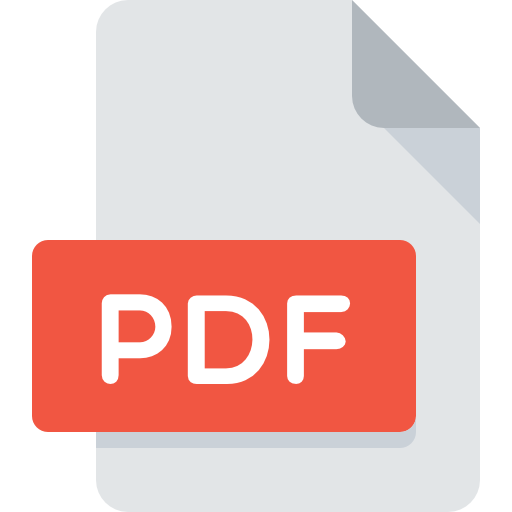
The menu revealed: Unpacking the influence of nutrition labelling on fast food choices
Nur Haziqah Anuar
Faculty of Hotel and Tourism Management, Universiti Teknologi MARA Cawangan Pulau Pinang, Kampus Permatang Pauh, 13500 Permatang Pauh, Pulau Pinang Malaysia
Norrina Din
Faculty of Hotel and Tourism Management, Universiti Teknologi MARA Cawangan Pulau Pinang, Kampus Permatang Pauh, 13500 Permatang Pauh, Pulau Pinang Malaysia
Arnieyanti Abdul Hadi
Faculty of Hotel and Tourism Management, Universiti Teknologi MARA Cawangan Pulau Pinang, Kampus Permatang Pauh, 13500 Permatang Pauh, Pulau Pinang Malaysia
Siti Rohimi Mohamed Apandi
Faculty of Hotel and Tourism Management, Universiti Teknologi MARA Cawangan Pulau Pinang, Kampus Permatang Pauh, 13500 Permatang Pauh, Pulau Pinang Malaysia
Muhammad 'Arif Aizat Bashir
Faculty of Hotel and Tourism Management, Universiti Teknologi MARA Cawangan Pulau Pinang, Kampus Permatang Pauh, 13500 Permatang Pauh, Pulau Pinang Malaysia
Abstract
This study delves into the intriguing realm of fast-food consumer behavior, focusing on the pivotal role of nutrition labelling in shaping purchasing intentions. Through the Theory of Planned Behaviour lens, the research investigates how nutrition information influences consumer choices, with a specific focus on students at UiTM Pulau Pinang, Permatang Pauh. Aligned with Sustainable Development Goal 3 (SDG 3), which aims to ensure healthy lives and promote well-being for all at all ages, the study explores the potential of nutrition labelling to enhance consumer health consciousness. Employing a survey methodology, the study captures valuable insights into customer attitudes toward nutrition labelling and its impact on their fast-food consumption habits. Analysis using SPSS 28 software reveals significant positive correlations between the Theory of Planned Behaviour constructs, indicating a shift towards health consciousness among fast food consumers. Notably, the inclusion of nutrition information on menus emerges as a key driver influencing customers' future purchase intentions, encouraging them to opt for healthier meal choices. This research sheds light on the evolving landscape of fast-food consumption, highlighting the growing importance of nutrition labelling in catering to health-conscious consumer preferences. The findings offer practical implications for fast food establishments, emphasizing the potential benefits of incorporating nutrition labelling into their menus to attract and retain health-conscious consumers. While the study's scope is limited to a specific student population, it provides a springboard for future research to explore similar trends in broader consumer segments.
Keywords:Nutrition labelling, Sustainable Development Goals, Fast food Consumer and Behaviour
References:
Ajzen, I. (1991). The theory of planned behavior. Organizational behavior and human decision processes, 50(2), 179-211.
Ajzen, I., Lohmann, S., Fishbein, M., & Albarracin, D. (2018). The influence of attitudes on behavior. The Handbook of Attitudes: Volume 1: Basic Principles, May, 197–255. https://doi.org/https://doi.org/10.4324/9781315178103-5
Arya, B., Chaturvedi, S., & Bhati, N. S. (2024). Extending the theory of planned behaviour to predict sustainable food consumption. Environment, Development and Sustainability, 1-24.
Auchincloss, A. H., Mallya, G. G., Leonberg, B. L., Ricchezza, A., Glanz, K., & Schwarz, D. F. (2013). Customer responses to mandatory menu labeling at full-service restaurants. American Journal of Preventive Medicine, 45(6), 710–719.
Bosnjak, M., Ajzen, I., & Schmidt, P. (2020). The theory of planned behavior: selected recent advances and applications. Europe’s Journal of Psychology, 16(3), 352. https://doi.org/10.5964/ejop.v16i3.3107
Burton, S., & Creyer, E. H. (2004). What consumers don’t know can hurt them: consumer evaluations and disease risk perceptions of restaurant menu items. Journal of Consumer Affairs, 38(1), 121–145. https://doi.org/10.1111/j.1745-6606.2004.tb00468.x
Cao, D., Zheng, Y., & Li, G. (2024). Understanding food pleasure in organic consumption: the moderating effects of trust within the theory of planned behavior. British Food Journal, 126(2), 898-919.
Chung, Dae Hee, Doo Bong Han, Rodolfo M. Nayga Jr, and Sang Hyeon Lee. "Does more information mean better choices? A study on calorie display and consumer behavior in restaurants." Food Quality and Preference 113 (2024): 105044.
Coşkun, A., & Yetkin Özbük, R. M. (2020). What influences consumer food waste behavior in restaurants? An application of the extended theory of planned behavior. Waste Management, 117, 170–178. https://doi.org/10.1016/j.wasman.2020.08.011.
Dani, A., Anis, M., Saad, S., Shah, H., Aziz, J., Raza Jaffari, A., Waris, S., Ejaz, W., Fatima, M., & Sherazi, S. K. (2012). The impact of brands on consumer purchase intentions. Asian Journal of Business Management, 4(2), 105–110.
Delvarani, S., Ghazaali, H., & Othman, M. (2013). Factors affecting fast food consumers’ intention to use menu labeling in Klang Valley, Malaysia. International Food Research Journal, 20(4).
Fielding, K. S., Terry, D. J., Masser, B. M., Bordia, P., & Hogg, M. A. (2005). Explaining landholders’ decisions about riparian zone management: The role of behavioural, normative, and control beliefs. Journal of Environmental Management, 77(1), 12–21. https://doi.org/10.1016/j.jenvman.2005.03.002
Gao, L., Wang, S., Li, J., & Li, H. (2017). Application of the extended theory of planned behavior to understand individual’s energy saving behavior in workplaces. Resources, Conservation and Recycling, 127, 107–113. https://doi.org/10.1016/j.resconrec.2017.08.030
Giazitzi, K., & Boskou, G. (2021). Preferences for nutrition information in foodservice outlets among Greek consumers. Journal of Foodservice Business Research, 24(5), 612–627. https://doi.org/10.1080/15378020.2021.1924535
Hashad, M., Yasser, A., & Gihan, A. (2021). Customers’ desire towards menu labeling in quick-service restaurants. Journal of the Faculty of Tourism and Hotels-University of Sadat City, 5(1/1).
Karatzi, K., Poulia, K. A., Papakonstantinou, E., & Zampelas, A. (2021). The Impact of Nutritional and Lifestyle Changes on Body Weight, Body Composition and Cardiometabolic Risk Factors in Children and Adolescents during the Pandemic of COVID-19: A Systematic Review. Children, 8(12), 1130.
Kim, E., Ham, S., Yang, I. S., & Choi, J. G. (2013). The roles of attitude, subjective norm, and perceived behavioral control in the formation of consumers’ behavioral intentions to read menu labels in the restaurant industry. International Journal of Hospitality Management, 35, 203–213. https://doi.org/10.1016/j.ijhm.2013.06.008
Krejcie, R. V, & Morgan, D. W. (1970). Determining sample size for research activities. Educational and Psychological Measurement, 30(3), 607–610. https://doi.org/https://doi.org/10.1177/001316447003000308
Kozup, J. C., Creyer, E. H., & Burton, S. (2003). Making healthful food choices: the influence of health claims and nutrition information on consumers’ evaluations of packaged food products and restaurant menu items. Journal of Marketing, 67(2), 19–34. https://doi.org/10.1509/jmkg.67.2.19.18608
Lin, N., & Roberts, K. R. (2020). Using the theory of planned behavior to predict food safety behavioral intention: A systematic review and meta-analysis. International Journal of Hospitality Management, 90, 102612. https://doi.org/10.1016/j.ijhm.2020.102612
Marathe, A., Liu, C., Kapcala, L. P., Hershkowitz, N., Men, A., Uppoor, R., Mehta, M., & Wang, Y. (2019). Pharmacometric Bridging Approach for U.S. Food and Drug Administration Approval and Identification of Topiramate Dosing Regimen for Pediatric Patients 2-9 Years of Age with Epilepsy. Journal of Pharmaceutical Sciences, 108(4), 1598–1603. https://doi.org/10.1016/j.xphs.2018.11.027
McEachan, R., Conner, M., Taylor, N., & Lawton, R. (2016). Prospective prediction of health-related behaviours with the theory of planned behaviour: A meta-analysis. Health Psychology Review, 10(4), 336-355.
Ministry of Health Malaysia (2016). National Plan of Action for Nutrition of Malaysia (2016-2025). National Coordinating Committee on Food and Nutrition, Ministry of Health Malaysia, Putrajaya.
Mohammed, R. A. E. (2024). Analysis of healthy lifestyle (diet, physical activity, and healthy behavior) in the employees of Dar Al Uloom University. SPORT TK-Revista EuroAmericana de Ciencias del Deporte, 13, 7-7.
Mhurchu, C. N., Eyles, H., Jiang, Y., & Blakely, T. (2018). Do nutrition labels influence healthier food choices? Analysis of label viewing behaviour and subsequent food purchases in a labelling intervention trial. Appetite, 121, 360–365.
Pfledderer, C. D., Ranjit, N., Pérez, A., Malkani, R. I., Ferreira De Moraes, A. C., Hunt, E. T., ... & Hoelscher, D. M. (2024). Using the Nutrition Facts Label to Make Food Choices Is Associated with Healthier Eating among 8th and 11th-Grade Students: An Analysis of Statewide Representative Data from the 2019–2020 Texas School Physical Activity and Nutrition Survey. Nutrients, 16(2), 311.
Pudasaini, A., Thapa, S., & Khadka, S. (2024). Risk Factors and Complications Among Overweight Adolescents (14-18 Years). International Journal of Future Medical Research, 5(6), 10889. https://doi.org/10.36948/ijfmr.2023.v05i06.10889
Salhadi, N. A., Ab Hamid, M. R., Osman, N. S., & Md Nor, N. (2018). Practice and Challenges towards Healthy Cafeteria in Selangor, Malaysia. Asian Journal of Quality of Life, 3(12), 127. https://doi.org/10.21834/ajqol.v3i12.149
Scarborough, P., Matthews, A., Eyles, H., Kaur, A., Hodgkins, C., Raats, M. M., & Rayner, M. (2015). Reds are more important than greens: How UK supermarket shoppers use the different information on a traffic light nutrition label in a choice experiment. International Journal of Behavioral Nutrition and Physical Activity, 12(1), 1–9. https://doi.org/10.1186/s12966-015-0319-9
Shin, Y. H., Jung, S. E., Im, J., & Severt, K. (2018). The theory of planned behavior and the norm activation model approach to consumer behavior regarding organic menus. International Journal of Hospitality Management, 69, 21–29. https://doi.org/10.1016/j.ijhm.2017.10.011
Sirieix, L., Lála, J., & Kocmanová, K. (2017). Understanding the antecedents of consumers’ attitudes towards doggy bags in restaurants: Concern about food waste, culture, norms and emotions. Journal of Retailing and Consumer Services, 34, 153–158. https://doi.org/10.1016/j.jretconser.2016.10.004
Sobaih, A. E. E., & Abdelaziz, A. S. (2022). The Impact of Nutrition Labelling on Customer Buying Intention and Behaviours in Fast Food Operations: Some Implications for Public Health. International Journal of Environmental Research and Public Health, 19(12), 7122.
Sogari, G., Velez-Argumedo, C., Gómez, M. I., & Mora, C. (2018). College students and eating habits: A study using an ecological model for healthy behavior. Nutrients, 10(12), 1–16. https://doi.org/10.3390/nu10121823
Stran, K. A., Knol, L. L., Severt, K., & Lawrence, J. C. (2016). College students' intentions to use calorie information on a restaurant menu: application of the theory of planned behavior. American Journal of Health Education, 47(4), 215-223.
Sultan, P., Tarafder, T., Pearson, D., & Henryks, J. (2020). Intention-behaviour gap and perceived behavioural control-behaviour gap in theory of planned behaviour: moderating roles of communication, satisfaction and trust in organic food consumption. Food Quality and Preference, 81, 103838. https://doi.org/10.1016/j.foodqual.2019.103838
Ursachi, G., Horodnic, I.A. and Zait, A. (2015). How Reliable are Measurement Scales? External Factors with Indirect Influence on Reliability Estimators. Procedia Economics and Finance, 20(15), 679–686. https://doi.org/10.1016/s2212-5671(15)00123-9



